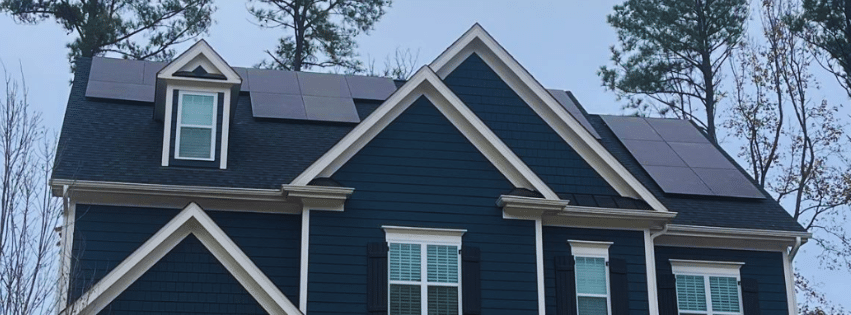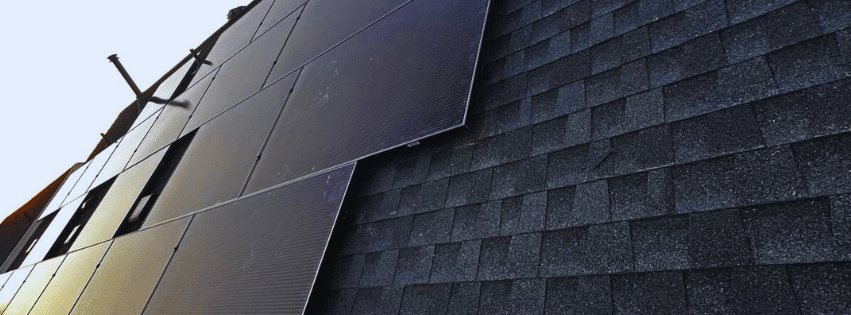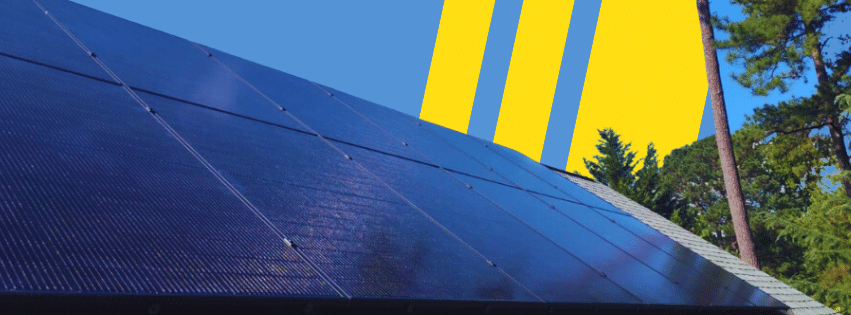Every day across America, water treatment facilities process billions of gallons of wastewater. A single mid-sized facility handles over 12 million gallons daily, with an annual power bill reaching into the millions. But these facilities share something beyond their essential service – large, unused spaces perfectly positioned to capture sunlight.
The challenge of managing waste while keeping costs down affects every community. Waste treatment facilities rank among the largest energy consumers in municipal operations, often using more electricity than schools and libraries combined. For facility managers watching their budgets shrink while energy costs climb, it feels like trying to fill a bucket with a hole in the bottom.
Solar power is transforming this equation. By harnessing sunlight, treatment facilities can reduce their energy costs by up to 95%, directing those savings back into infrastructure improvements, saving money, and revolutionizing waste treatment. Solar-powered facilities run cleaner and build resilience against rising energy costs.
For businesses nationwide, the benefits start day one. Modern solar installations integrate seamlessly into existing waste treatment operations without disrupting service. The math speaks for itself: lower operational costs, reduced carbon footprint, and improved community health outcomes. With federal and state incentives at historic highs, the barrier to entry has never been lower.
A mid-sized county treatment facility generating 82% of its power needs through solar saves taxpayers hundreds of thousands annually. These systems typically pay for themselves in under 5 years, creating lasting returns that fund other essential services.
The future of waste treatment is turning every ray of sunshine into an opportunity for cleaner, more cost-effective operations.
The Energy Behind Waste Treatment
Waste treatment facilities operate as energy-intensive powerhouses, running complex systems around the clock. A typical facility consumes between 1,200 to 2,500 kilowatt-hours (kWh) of electricity to process just one million gallons of wastewater. To put this in perspective, that’s roughly equivalent to the monthly energy consumption of 30 average American homes.
The energy demands follow distinct patterns throughout the day. Peak usage typically occurs during two critical periods: early morning (6 AM to 9 AM) when residential water usage spikes as communities start their day, and early evening (5 PM to 8 PM) when people return home. During these windows, energy consumption can jump by 40% above baseline.
Core Systems – Breaking Down the Power Usage
Aeration systems, the workhorses of biological treatment, consume up to 60% of a facility’s total energy. These systems pump oxygen into wastewater to support beneficial bacteria that break down organic matter. They must run continuously, making them prime candidates for solar power integration.
- Pumping stations represent another 15% of energy usage. These components move wastewater through various treatment stages and maintain proper flow rates. Advanced facilities often employ variable frequency drives (VFDs) to optimize pump efficiency, but they still require substantial power.
- UV disinfection systems, more common in modern facilities, add another layer of energy demand. While more environmentally friendly than chemical treatment, these systems need consistent power to maintain disinfection levels. They typically account for 10% to 15% of total facility energy use.
- The remaining energy supports essential auxiliary systems: monitoring equipment, lighting, HVAC systems for control rooms, and sludge processing equipment. Each component plays a role in maintaining water quality standards while contributing to the facility’s energy footprint.
Infrastructure requirements extend beyond powering equipment. Facilities need sturdy electrical systems capable of handling load fluctuations, backup power solutions for emergencies, and sophisticated control systems to monitor and optimize energy usage. Traditional grid connections have to be sized to handle maximum load scenarios, even though these peaks occur for only a few hours each day.
Growing Demands
As communities expand and environmental standards rise, treatment facilities face mounting pressure. New regulations often require additional treatment processes, each adding to the energy burden. Facilities must now plan for:
- Higher treatment standards requiring more intensive processes
- Increased processing capacity for growing populations
- More sophisticated monitoring and control systems
- Greater resilience against power outages and system failures
Breaking Down the Numbers
Waste treatment facilities face a perfect storm of increasing expenses. Energy costs alone have risen 15% annually over the past three years, pushing budgets to their limits. A mid-sized facility processing 10 million gallons daily now spends between $500,000 and $750,000 yearly on electricity – a number that continues to climb.
The Real Cost of Clean Water
Average Monthly Power Bill: Most facilities see bills ranging from $45,000-$62,000 monthly, with summer peaks often reaching $75,000 due to increased cooling needs and higher processing demands. These costs spike during extreme weather events when backup systems must engage.
Chemical Treatment Expenses: Annual spending of $200,000-$300,000 covers purification chemicals, with prices surging due to supply chain disruptions and increased transportation costs. Facilities must maintain minimum 90-day supplies, tying up capital in inventory.
Equipment Maintenance: Yearly budgets of $150,000-$250,000 barely cover basic upkeep. This includes preventive maintenance, emergency repairs, and component replacements. Many facilities report deferring up to 40% of recommended maintenance due to budget constraints.
Staffing and Training Requirements: Annual costs of $400,000-$600,000 support skilled operators, maintenance technicians, and management staff. This includes mandatory certification programs, safety training, and ongoing education to meet evolving regulatory requirements.
Municipal Budgets Under Pressure
Budget Consumption: Treatment facilities typically use 30-35% of a municipality’s total energy budget, creating ripple effects across other services. This percentage has grown from 25% just five years ago, forcing difficult trade-offs.
Infrastructure Delays: Critical upgrades to aging systems often wait 3-5 years beyond recommended replacement schedules. A typical facility needs $2-3 million in upgrades every decade to maintain current service levels.
Maintenance Deferrals: Preventive maintenance programs face cuts, with some facilities operating at 60% of recommended maintenance levels. This creates a dangerous cycle of emergency repairs costing 3-4 times more than planned maintenance.
Training Limitations: Staff development programs see reduced funding, impacting operational efficiency and safety. Required certifications continue, but advanced training and cross-training opportunities diminish.
The Community Impact
Household Cost Increases: The average family has seen water and sewer bills rise $12-18 annually for the past decade. A household using 4,000 gallons monthly typically pays $72-85, up from $50-60 just five years ago.
Property Tax Implications: Communities rely on property tax increases of 0.25-0.5% to fund infrastructure bonds. For a $300,000 home, this means an additional $75-150 annually.
Rental Market Effects: Property managers report utility cost increases leading to rental rate hikes of $25-40 monthly per unit. Multi-family buildings face even steeper increases due to higher usage rates.
Business Community Strain: Local businesses, especially restaurants and laundromats, report utility costs rising 20-30% over three years. A typical restaurant now spends $800-1,200 monthly on water and sewer services.


Solar Technology – The Future of Waste Treatment
Today’s waste treatment facilities are undergoing a remarkable transformation through solar integration. Gone are the days of simple rooftop panels – modern solutions leverage every available space to maximize clean energy production.
The Power of Strategic Integration
Treatment facilities offer unique opportunities for solar implementation. Ground installations utilize buffer zones around processing areas, transforming these safety-mandated spaces into power generation hubs. A single acre can generate 1-2 megawatts of power, with tracking systems following the sun’s path to boost production by up to 25% compared to fixed installations.
Perhaps the most innovative development is the rise of floating solar systems on treatment lagoons. These installations generate power and create a symbiotic relationship with the treatment process. The water’s cooling effect increases panel efficiency by 10%, while the panels themselves reduce water evaporation and limit algae growth through natural shading. This dual-purpose approach maximizes existing infrastructure without requiring more land.
Building integration has also evolved. Modern facilities incorporate solar technology across their entire footprint, from rooftop arrays to parking canopies. These installations serve multiple purposes, providing shade for vehicles and equipment while generating substantial power for facility operations.
Smart Grid Connections
The true intelligence of modern solar systems lies in their smart grid integration. Monitoring systems act as the facility’s brain, predicting power needs based on weather patterns, time of day, and historical usage data. Artificial intelligence adjusts operations in real-time, shifting non-critical processes to align with peak solar production hours.
This grid communication creates a two-way relationship with power utilities. During periods of low demand, facilities can sell excess power back to the grid, creating new revenue streams. When demand spikes, smart inverters ensure seamless transitions between solar and grid power, maintaining consistent operations without interruption.
The Storage Solution
Energy storage transforms intermittent solar power into a reliable 24/7 resource. Modern lithium-ion systems, scaled from 250kWh to 2MWh, match each facility’s unique demands. These systems don’t just store power – they optimize its use through intelligent management software that extends battery life to 15-20 years.
Innovative facilities are taking storage further by implementing hybrid solutions. By combining battery storage with thermal systems and compressed air, they create a strong energy backbone that can handle everything from routine operations to emergencies. Some facilities are even exploring hydrogen fuel cells for long-term storage, preparing for a future where energy independence is the norm.
The Impact on Operations
This integration delivers immediate benefits to facility operations. Energy costs typically drop by 40% through strategic peak shaving and load shifting. More importantly, facilities gain control over their energy future, creating predictable operating costs in an unpredictable energy market.
These advancements are reshaping how we think about waste treatment infrastructure. As we look to the future, these solar innovations will play an important role in creating sustainable facilities that serve their communities more efficiently than ever before.
Creating a Greener Tomorrow
Solar-powered waste treatment represents a leap forward in environmental stewardship. As facilities across the country embrace this technology, the positive impacts ripple through our communities and ecosystems.
The Carbon Equation
When a waste treatment facility transitions to solar power, the carbon reduction numbers tell a compelling story. A mid-sized facility processing 10 million gallons daily can reduce its carbon emissions by 1,500 to 2,000 metric tons annually – equivalent to removing 400 cars from the road or planting 25,000 trees.
These reductions come from multiple sources. Direct energy consumption from the grid drops by 60-90%, depending on the solar system size. Secondary emissions from chemical manufacturing and transportation decrease as facilities optimize their treatment processes with solar-powered automation. The cumulative effect transforms these facilities from carbon contributors to environmental champions.
Water: The Hidden Benefits
Solar integration brings advantages to water conservation efforts. Traditional cooling systems for electrical equipment consume thousands of gallons daily. By switching to solar, facilities typically save 300,000 to 500,000 gallons of water annually through reduced cooling needs.
Advanced solar installations, particularly floating arrays on treatment ponds, create additional water savings. The panels’ shade reduces evaporation by up to 90% in covered areas. This preservation becomes more valuable as communities face water scarcity challenges and drought conditions.
Maximizing Land Use
Modern solar installations turn unused spaces into productive areas. Buffer zones, required by law around treatment facilities, now serve dual purposes. These areas host ground-mounted panels while maintaining their main function as safety perimeters. The native vegetation beneath the panels often thrives, creating new habitats for local wildlife.
Floating solar installations demonstrate perfect land-use efficiency. By utilizing existing water surfaces, these systems generate power without consuming additional real estate. A 1-acre floating array can power significant portions of facility operations while preserving terrestrial spaces for other uses.
Breathing Easier
The air quality improvements extend beyond reduced carbon emissions. As facilities reduce their reliance on grid power, they help decrease regional demand for fossil fuel generation. This leads to measurable reductions in:
- Particulate matter from power plants
- Ground-level ozone formation
- Sulfur dioxide emissions
- Nitrogen oxide levels
Local communities benefit from these improvements through decreased respiratory issues and better air quality. Studies show that areas around solar-powered facilities experience a 15-20% reduction in air pollution-related health incidents.
A Sustainable Legacy
Perhaps most importantly, these environmental benefits compound over time. As solar technology advances and facilities optimize their systems, the positive impacts grow. Today’s investments in solar-powered waste treatment create cleaner communities for generations to come.


Tomorrow’s Solutions, Available Today
Solar technology in waste treatment continues to evolve. Recent breakthroughs in bifacial solar panels showcase this progress, with these double-sided panels capturing reflected light to generate 5-15% more power than traditional arrays. These innovations are just the beginning of a technological revolution in sustainable waste management.
Breaking Efficiency Barriers
Scientists have shattered previous limitations of solar cell efficiency. New perovskite-silicon tandem cells achieve conversion rates above 30% – a leap from the current industry standard of 20%. For waste treatment facilities, this advancement means smaller installations can generate more power, reducing initial investment costs while increasing energy production.
Research teams are developing transparent solar cells that can be integrated into facility windows and equipment housing. These cells allow natural light through while capturing energy, turning every glass surface into a potential power generator. Early trials show these installations could add 10-15% to a facility’s total solar production.
Smart Integration Gets Smarter
Artificial intelligence is revolutionizing how treatment facilities manage their solar systems. Machine learning algorithms now predict energy needs with 95% accuracy, adjusting operations in real-time to maximize solar utilization. These systems learn from weather patterns, usage data, and equipment performance to optimize every aspect of facility operations.
New storage technologies are emerging that could transform overnight operations. Solid-state batteries, expected to reach commercial viability by 2026, promise triple the energy density of current lithium-ion systems while lasting twice as long. Some facilities are already testing liquid metal batteries, which offer unlimited cycling capability and use abundant, low-cost materials.
The Internet of Clean Energy
Treatment facilities are becoming part of a larger clean energy network. Advanced microgrids allow facilities to share excess solar power with neighboring infrastructure, creating resilient community energy systems. This approach helps balance load demands and guarantees continuous operation during grid disruptions.
Virtual power plants (VPPs) represent another frontier. Multiple solar-powered facilities can coordinate their operations through cloud-based systems, acting as a single power generation entity. This collaboration optimizes resource use across entire regions while providing new revenue opportunities through power trading.
Industry Transformations
The waste treatment industry stands at the threshold of major changes. Autonomous systems powered by solar energy will soon handle routine operations, with human operators focusing on system optimization and emergency response. Drone-based monitoring systems will use thermal imaging to detect potential issues before they affect operations.
Floating solar systems are evolving into complete ecological solutions. Next-generation designs incorporate water quality monitoring, automated cleaning systems, and even aquatic habitat creation. These systems might soon generate power while improving water quality through filtration technologies.
The Path Forward
As these innovations mature, they promise to transform waste treatment from an energy-intensive necessity into a cornerstone of sustainable infrastructure. The future facility will generate clean power and provide ecological benefits.
We’re entering an era where waste treatment facilities become clean energy hubs for their communities. The question isn’t whether these changes will happen, but how quickly facilities will adapt to embrace these technologies.
Creating a Brighter Future Together
The solar revolution in waste treatment isn’t just about technology – it’s about vision, commitment, and expertise. As we’ve explored the potential of solar power in waste management, one thing becomes clear: the future of clean energy and clean water are inseparably linked.
At 8MSolar, we’re proud to lead this transformation. With over 2,000 successful installations and a decade of experience, our certified solar designers and engineers bring unmatched expertise to every project. We understand that waste treatment facilities face unique challenges, and our team designs custom solutions that maximize efficiency and return on investment.
What sets us apart is our hands-on approach. Our owners and engineers are directly involved in every project, seeing that each installation meets our rigorous standards for performance and reliability. This dedication has made us the trusted choice for municipalities and private facilities looking to reduce their carbon footprint while controlling costs.
Our lifetime warranty reflects our confidence in the quality of our work and our commitment to your long-term success. As the only local solar company in NC offering this level of protection, we stand behind our installations for the long haul.
The future of waste treatment is sustainable, efficient, and powered by the sun. Ready to be part of this transformation? Contact 8MSolar today to explore how we can help your facility harness the power of solar energy. Together, we can create cleaner communities and a brighter tomorrow.

